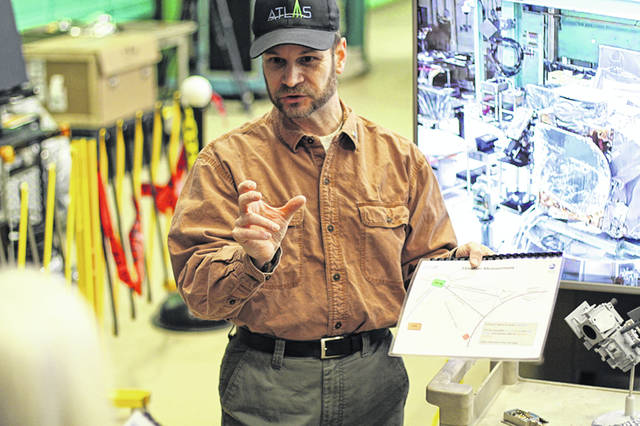
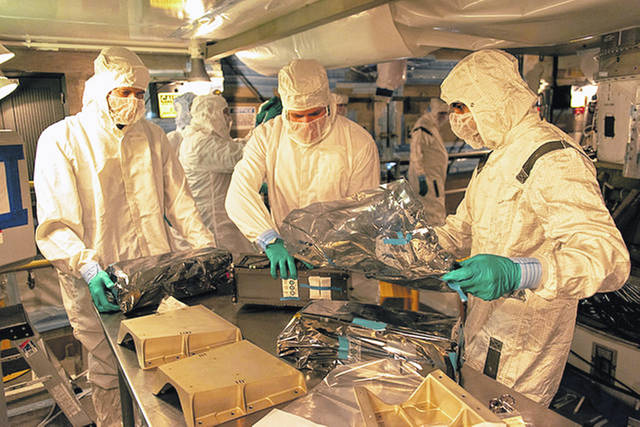
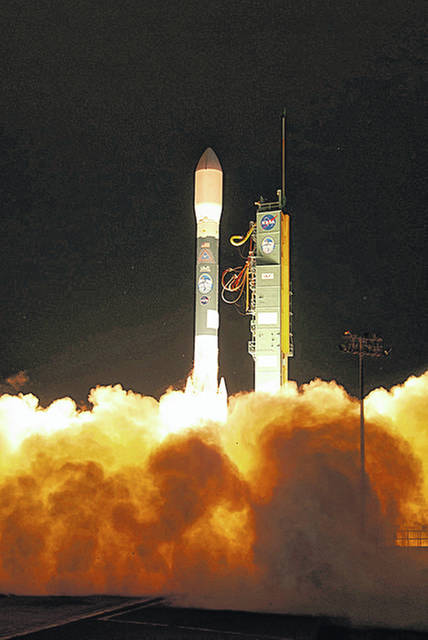
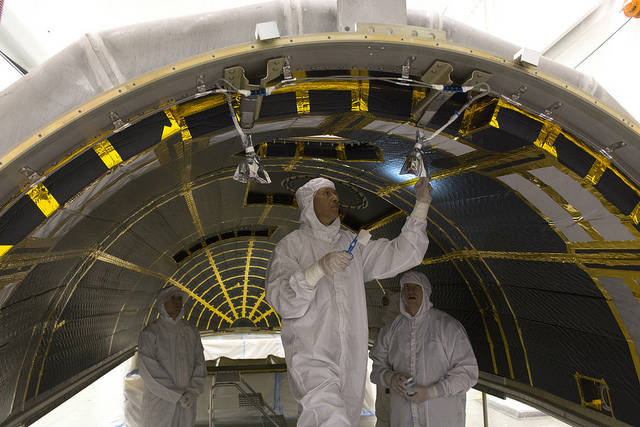
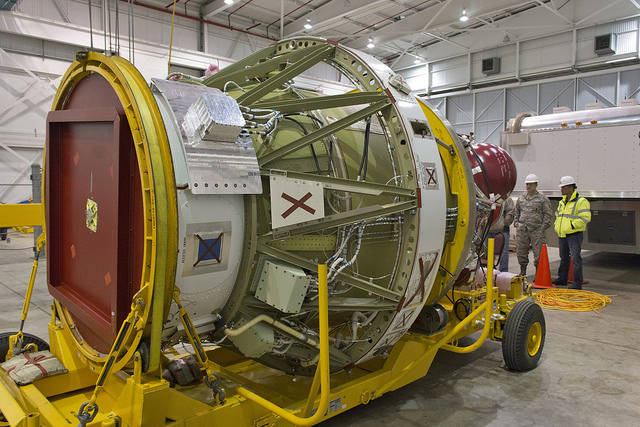

SIDNEY — NASA launched a new satellite from Vandenberg Air Force Base in California this month.
The Ice, Cloud and land Elevation Satellite-2, ICESat-2, rode into space aboard a Delta II rocket at 9:02 a.m. Eastern Daylight Time, Sept. 15. When it did, Joseph and Nan Martino, of Sidney, were there to cheer its success.
That’s because Joseph’s son, Tony Martino, of Edgewater, Maryland, designed the instrument in ICESat-2 that will enable it to complete its mission: measuring the height of earth’s polar ice from space.
“To design and build it took 11 years from start to launch,” Tony said by phone, recently. “By 2012, we had very nearly the final design completed. It was a team (who worked on it). You could think of me as the architect. Hundreds were involved in the building.”
Seeing the launch was thrilling for Joseph and Nan. It was 6:02 a.m. in California and still dark when the rocket went up. The couple — with a crowd of people — had been at the observation site, four and a half miles from the launch pad, since 4 a.m.
“The thing had solid fuel, strapped-on rockets. When they lit up, they lit up the whole area, very much like a highway flare, red and reflected off the cloud cover. The rocket went up and disappeared through the clouds,” Joseph said. In only a few seconds, it was gone.
However, a family friend, camping at the top of a 9,000-foot-high mountain, 300 miles away, saw the rocket emerge above the clouds and travel out of eyesight into space.
“I’d never seen a launch with solid fuel boosters. That was surprising,” Joseph said. “I saw a Titan missile (launch). This one was much more spectacular — all that red flame reflecting off the clouds.”
“For me, it was very emotional,” Nan said.
In advance of the launch, NASA had planned several days of activities, which the Martinos enjoyed. One was a presentation by Tony about how the ICESat-2 would operate. It will spend most of its time over Antarctica and Greenland, measuring polar ice. But it will also measure the heights of the forests around the world. Six laser beams will shoot from the satellite to earth and back again.
According to “ICESat-2: Measuring the Height of Earth’s Ice from Space,” a NASA publication, the satellite’s “ATLAS laser instrument pulses 10,000 times a second, each pulse sending 300 trillion bright green laser photons to the ground. Scienctists calculate height by using the time it takes individual photons sent from the laser to bounce off Earth’s surface and return to the satellite.
“The ATLAS receiver telescope collects the handful of photons from each laser pulse that return to the satellite. Every second, the instrument records data from 60,000 returning photons. Each photon’s flight time is measured with a precison of 800 picoseconds,” it reads. A picosecond is 1/1 trillionth of a second.
In addition to the presentations by Tony and other scientists, Joseph and Nan enjoyed a barbecue hosted by Northrup Grumman, one of dozens of companies involved in producing the satellite.
On the morning of the launch, visitors watched on big, closed circuit televisions the preparations, checks and final countdown of the launch.
Taking the ICESat-2 into its orbit, 310 miles above the earth, was the last mission of the Delta II rocket. Joseph, himself a mathematician and electrical engineer, had been involved in developing the Delta’s predecessor, the Thor missile.
“Back in the 1950s, I was project engineer for the Thor guidance system. So I was in at the beginning of the Thor and since that was the last Delta, I was at the end,” he said.
Nan and Joseph live in a house built by Tony’s great-grandfather, Joe Clem, the grandfather of Joseph’s first wife, Mary Lou Bouquot.
“My mother grew up in Sidney. My parents moved to Sidney when I was in college,” said Tony, who went to high school in Dayton. “In my early childhood, my great-aunt lived (in Sidney), and we visited often.”
Tony earned a Bachelor of Science in physics from Xavier University and a Doctor of Philosophy in optics from the University of Rochester. He has been an engineer and physicist for NASA since 1990. In 1999, he was awarded the NASA Medal for Exceptional Achievement for his work on the Cassini spacecraft, which orbited and photographed Saturn for 10 years, and he won the Robert H. Goddard Award for Exceptional Achievement in Science in 2013 for his part in the development of the ATLAS laser.
Watching his laser optics roar into the clouds and beyond after 11 years of work brought him mixed feelings two weeks ago.
“It was a mixture of being afraid of what was going to happen when they lit the rocket and excitement at completion of that phase of the project and moving on to the next and seeing the instrument doing what it was designed to do — and a certain amount of pride,” he said.
He was especially pleased to have his dad by his side during the launch.
“This is the biggest and maybe the only milestone moment of my professional career (that he was with me). Having him there was a really big thing,” Tony said.
He and his fellow scientists are now in a 60-day period during which they can work out bugs before the instrument is sent off on its mission. It is due to be turned on, Oct. 1.
“They’ll turn it on, one part at a time. The lasers will be the last piece,” Tony said. At some point, it will pass over Sidney, but until it becomes operational, the instrument scientist could not say when that would be. If the lasers fire when it does go by, people on the ground might be able to see them.
“It would look like, if you’re in a stadium and someone on the other side flashes a pocket camera,” Tony noted. The lasers pose no danger to people on earth.
“If you were standing right in front of it, it would be (dangerous); but it’s spread out over 500 kilometers. The amount of energy is too little to cause any harm,” he said.
The data collected by ICESat-2 will be transmitted to stations in Svalbard, Norway, Poker Flat, Alaska, and Wallops Island, Virginia. The raw data will then be sent to NASA’s Goddard Space Flight Center, where Tony works. From there, it will go to the National Snow and Ice Data Center in Boulder Colorado. The Boulder facility will make the data available to the public at nsidc.org.
For information about ISCSat-2, visit icesat-2.gsfc.nasa.gov.







